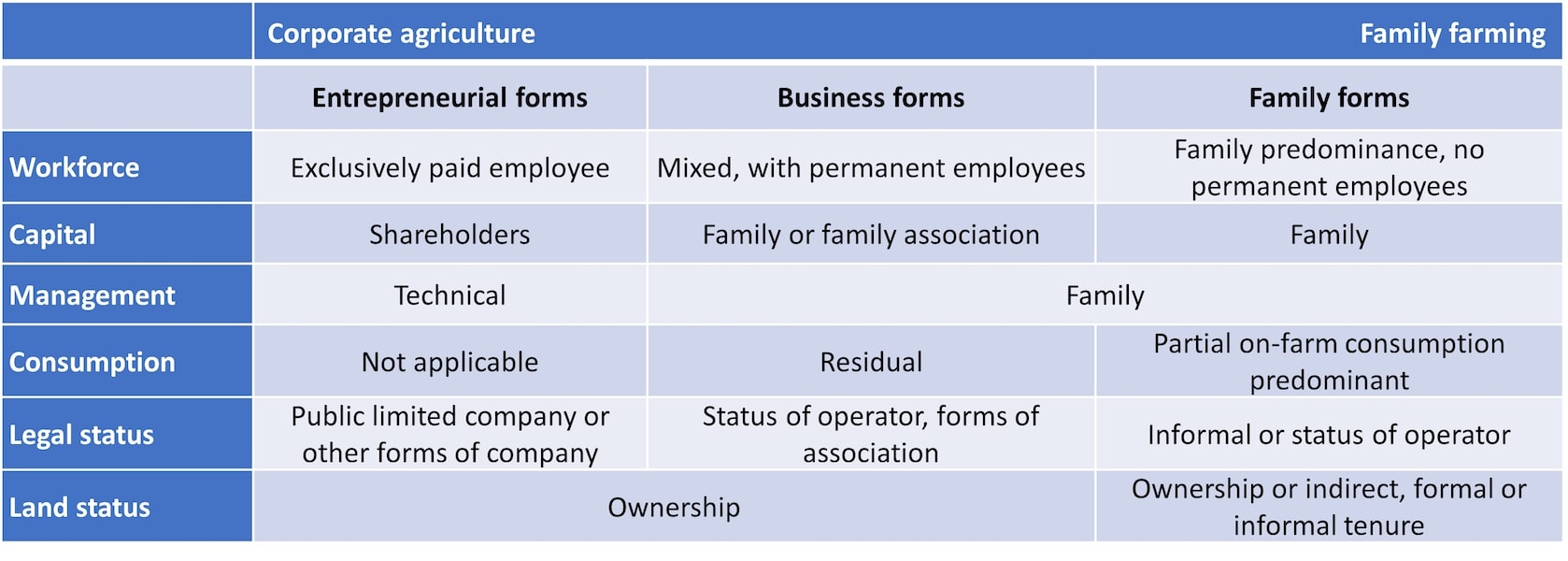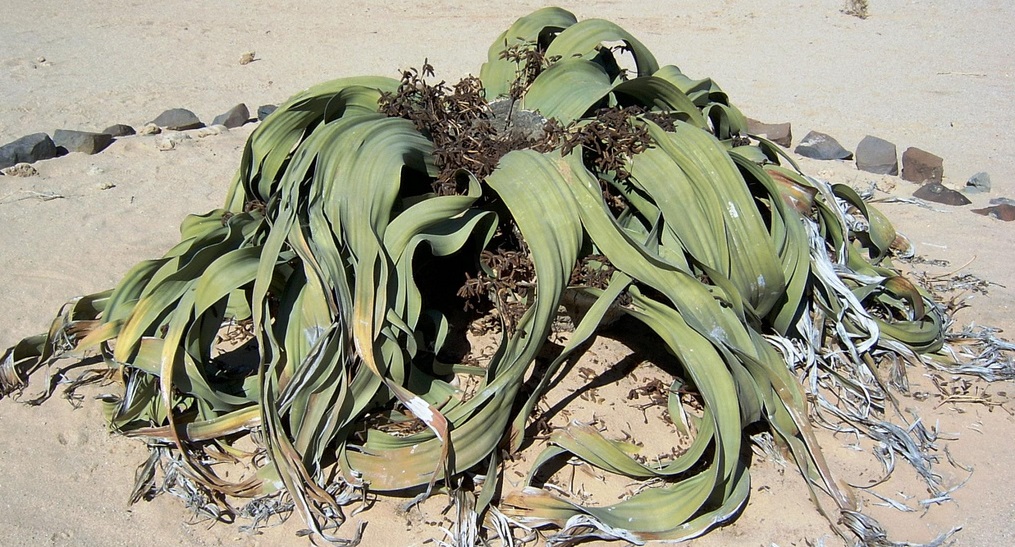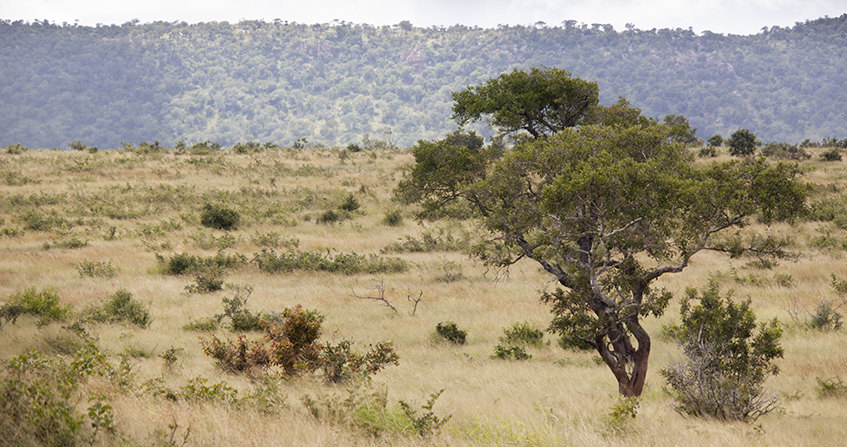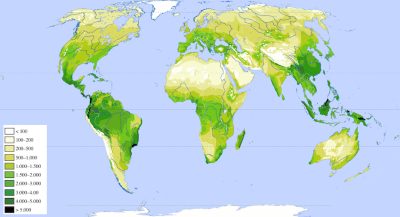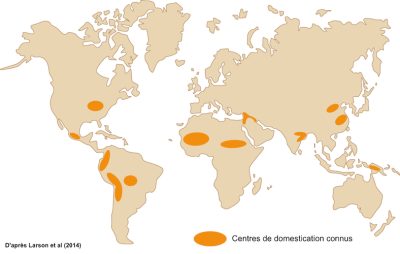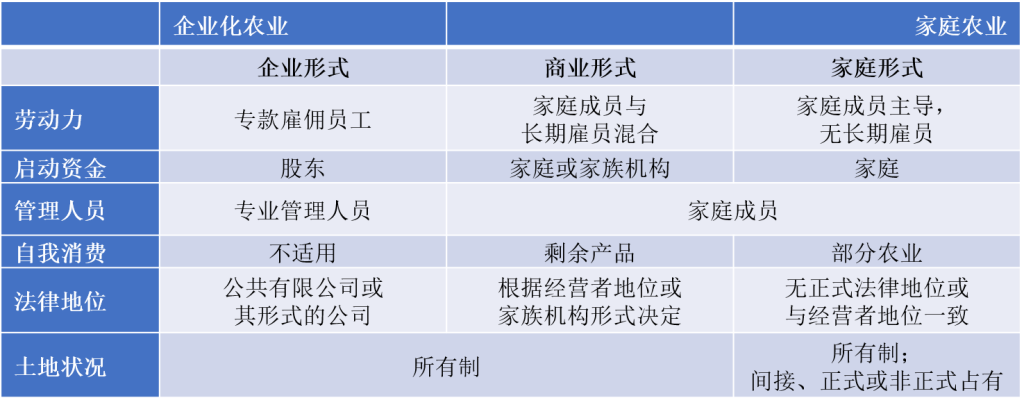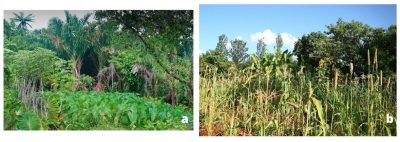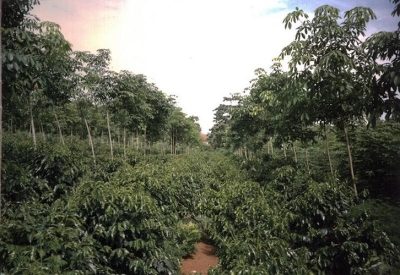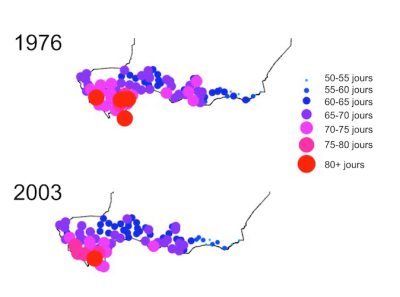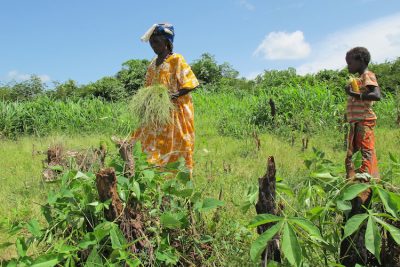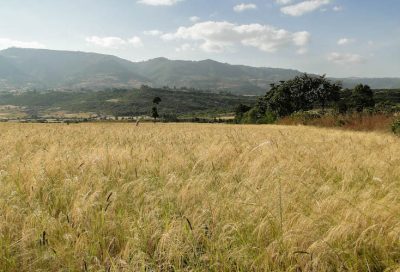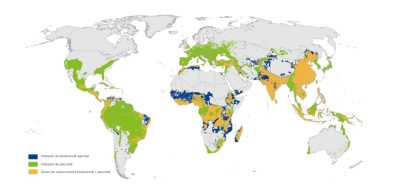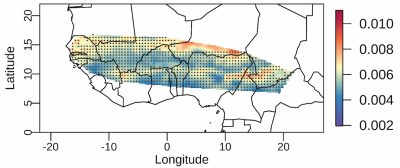Biodiversity and crop adaptation to climate change in developing countries
PDF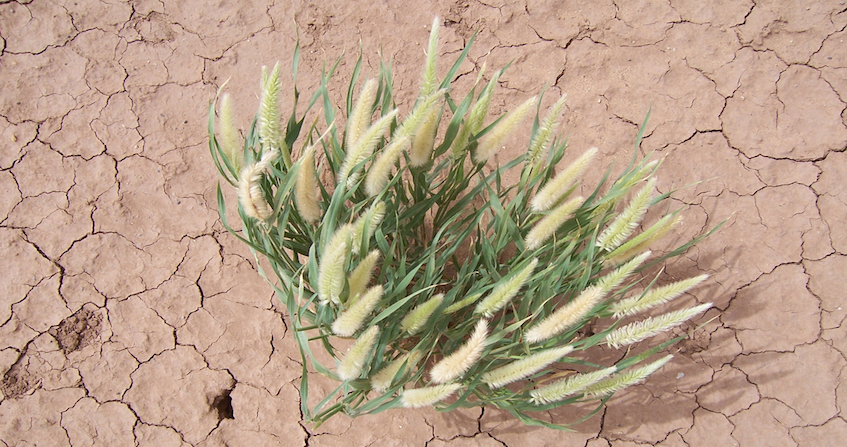
Global warming has accelerated since the 1970s. This climate change has a major impact on crops and threatens agricultural production. In the countries of the South, which are already vulnerable due to erratic local conditions, fragile social contexts and limited resources, climate change is further threatening food security. In response to this challenge, farmers are implementing several strategies. Short-term options are being deployed. But longer-term adaptation of agricultural ecosystems will have to include the maintenance, knowledge and rational use of the biodiversity of cultivated species. What role can agrobiodiversity play in the face of global change in developing countries, and how can it be used to enhance the resilience of these agricultural systems?
1. Agricultural landscapes in the South: a globally significant diversity
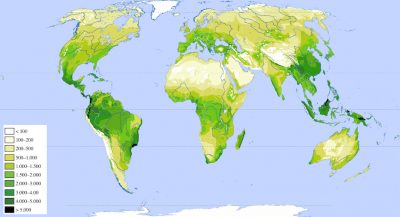
From an agricultural point of view, the world’s plant production is based on only a small proportion of species: out of about 391,000 known vascularized plants, only 31,000 are used by humans, and 5,000 contribute to their diet. However, a closer look at the countries of the South reveals that the 50 least developed countries contain four times more agricultural biodiversity than the rest of the planet in terms of the number of species cultivated.
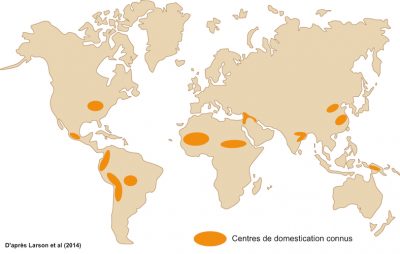
Finally, family farming plays an important role in the South. By definition in the hands of members of the same family, it is characterized by small farms and not very intensive production. It allows self-consumption and is built on family capital (Table 1). These small farmers largely dominate world agriculture: 63% of the world’s agricultural land is farmed by family farmers. However, they are also heavily concentrated in the South. Family farming occupies more than 50% of the active population in Asia and Africa, compared to less than 5% of the active population in Europe and North America.
Table 1. Main types of farms. [Source: Adapted from “Family Farming in the World. Definitions, contributions and public policies”. 2013. CIRAD]
2. Why is plant biodiversity an asset for agriculture in the face of climate change?
2.1. Links between biodiversity and productivity
- The insurance effect
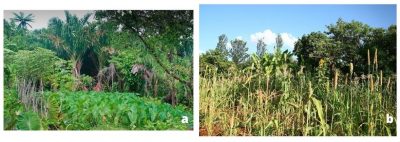
- Taking advantage of complementary ecological niches
Growing several species together also optimizes the use of resources by the plants. The complementarity of associated species can lead to a higher overall production than in a system based on the production of a single species. This complementarity, known as “niche” [4], can be:
- functional, when species in association do not use the same resources,
- temporal, when they benefit from these resources at different times in their development.
Within natural ecosystems niche complementarity has shown its role in maintaining their productivity and resilience.
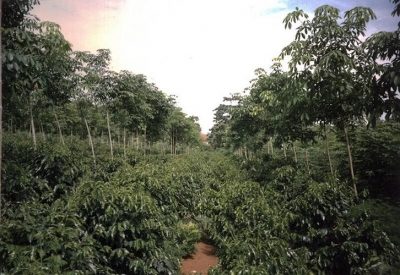
At the intra-specific level, a positive effect of genetic diversity was also observed, this time in terms of yield stability. This could lead to a rethinking of varietal selection schemes. Variety breeding is often focused on the creation of genetically homogeneous standard varieties, thus containing few functional differences. Some authors suggest, on the contrary, that farmers be encouraged to sow mixtures of varieties with strong differences in their physiology of resource acquisition (minerals, water, light, etc.) in order to maximize yield [5].
- Facilitation
Another advantage of combining several species in a crop is that it provides a beneficial nutrient input to the crop. A nutrient supply beneficial to the cultivation of one plant can be generated by the cultivation of another plant, a phenomenon called ‘facilitation’. For example, the association of leguminous plants, which fix nitrogen from the air, allows a nitrogen supply in the soil, which can be used by cereals. This type of association makes it possible to reduce the use of fertilizers. A 10-year field study in Malawi shows that combining peanuts or soybeans with maize improved yields, requiring up to half the amount of fertilizer compared to monoculture to produce equivalent amounts of grain, and on a more stable basis (yield variability reduced from 22% to 13%) [6].
2.2. Local adaptation
High genetic diversity in the face of a changing environment is also useful through the phenomenon of local adaptation (See The adaptation of organisms to their environment and Adaptation: responding to environmental challenges). At the variety level, there is functional diversity that can respond to new selection pressures, including those induced by climate change. This functional diversity may pre-exist within varieties or be acquired through gene exchanges or hybridization (crossing between two varieties).
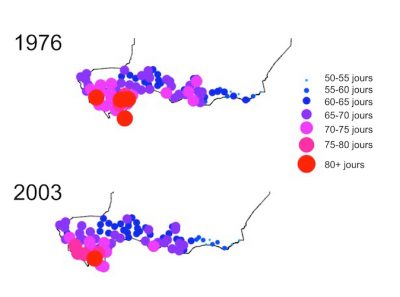
2.3. Introgression
The proximity of some crops to their wild ancestors allows crosses between cultivated and wild relatives. The term introgression refers to the fact that during these crosses, certain areas of the genome of one of the parent species are integrated into the genome of the other parent species. If this progeny is harvested at the same time as the cultivated plants, then “wild” genes will be maintained in the cultivated compartment when the seeds are resown. The existence of such gene flow between wild and cultivated plants enriches the genetic background of cultivated varieties and thus gives them greater diversity, and increased possibilities of adaptation. When the newly acquired diversity confers an additional advantage, this is called adaptive introgression.
This process underlies the evolution of many cultivated species during their domestication, and continues today in recurrent contacts between wild and cultivated populations. In millet, a major cereal cultivated in West Africa, adaptive introgressions have been demonstrated in the Sahelian zone for 15 “genomic regions” of the species, which correspond to particular areas within the DNA [8]. Farmers’ actions also promote the introduction of wild material into crops through conscious selection. Thus, in Benin, some farmers collect wild tubers or yam hybrids in spontaneous growth areas and add them to field crops. This is the traditional practice of “ennoblement“.
2.4. Neglected species
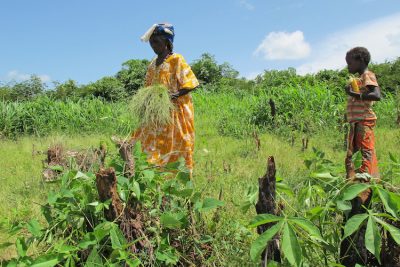
3. Is biodiversity mobilized in the South?
Faced with climate change, farmers in the South adopt a certain number of strategies, depending on their situation and their means. They may resort to different practices, to irrigation, to the use of different pesticides, or to radically different orientations, in favour of livestock farming, for example, or even by securing another source of income via a second occupation.
But these strategies are limited by the farmer’s financial capacity. In this context, the use oflocal agrobiodiversity is favoured by farmers in the South as a response to climate change because of its low cost.
In a survey of 291 coffee farmers in Mexico, for example, 75% stated that they had used different varieties or adopted new crops to cope with their perception of climate change [10].
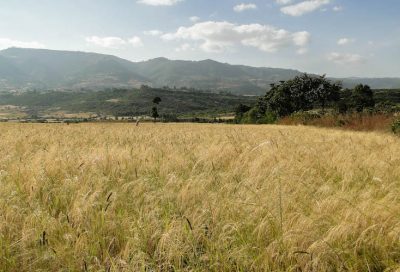
In Pakistan, a survey of 600 farmers in 4 different regions again ranked variety or crop change as the top choice to counter perceived climatic effects (88 and 81% of respondents respectively [13]). This survey also shows that these farmers do not grow more diversity: about 36% of farmers resort to increasing the number of varieties or species.
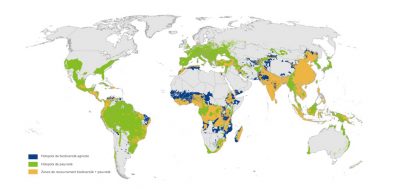
4. Obstacles and levers for a better use of biodiversity
4.1. The problem of biodiversity erosion
Climate change, in addition to its expected effects on crop yields, is a major factor in the redistribution of species across the globe. A study in sub-Saharan Africa compares current climate conditions with climate forecasts in 2070 for 29 crop species [15]. These climatic conditions will change significantly, to the point of making large areas of the study area unsuitable for current species. For example, 56% of the area currently occupied by Guinea yam will experience climatic conditions that the species has never been confronted with in 50 years. This raises the question of the erosion of cultivated diversity: if a crop is no longer possible locally, it is likely to be abandoned. This is already happening, for example in Senegal, where millet cultivation is gradually being abandoned in some villages [16].
4.2. Finding biodiversity adapted to future changes
Future climatic conditions in the range of potato, squash or millet will also have changed significantly by 2070 [16]. But their wild ancestors are currently found in climatic conditions close to those expected in sub-Saharan Africa in 50 years. We can therefore assume that these wild populations related to cultivated species contain variability adapted to these future conditions and would therefore be a useful biodiversity resource. However, this strategy has limitations: for species not native to the region of Africa where they are grown, such as potato and squash, the wild populations are found in South America. The biodiversity of interest in this case is therefore not easily and directly accessible to farmers.
4.3. Making better use of intra-specific diversity
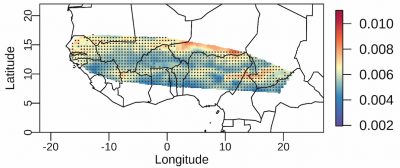
4.4. The need for a multi-stakeholder approach
A better use of biodiversity for agriculture must be based on a better knowledge of the capacity of this biodiversity to respond to future environmental changes. The association between genetic composition and adaptation to climate must be confirmed by field trials. Moreover, a variety or species is not only adapted to a climate, but to a more global environment including the soil and interacting organisms. It is therefore not a matter of transplanting varieties or species, but of including a priori interesting variability in plant improvement schemes, which must be designed to respond to changing environments in the agricultural contexts of the South.
Finally, the question of accessibility to biodiversity deemed appropriate is not simple. Assisted migration, which would consist of bringing varieties from one place to another, where they would be better adapted to environmental changes than local varieties, may run up against border or political issues. In addition, there are two other major obstacles:
- acceptance by local populations of varieties from distant areas both geographically and in terms of their history and socio-cultural characteristics. Farmers’ attachment to their traditional and ancestral agricultural seeds is indeed a subject of research in itself, and must be understood otherwise any attempt to use agrobiodiversity more widely will fail.
- the need for a more precise legislative framework than the existing one, which would regulate the exchange of germplasm between farmers in different countries in the context of an agricultural strategy of assisted migration in the South. While assisted migration is practised in the context of conservation programmes in natural areas, many issues are raised in the context of genetic resource management. Regulations on the ownership of genetic resources seek to combat biopiracy, i.e. the plundering of genetic resources, and to ensure the sharing of the benefits that may result from their use, in breeding schemes for example. But these same regulations raise the problem of access to genetic resources, which if too limited can hinder actions in favour of food security or the fight against climate change in terms of genetic progress. A framework adapted to the possibility of assisted migration has yet to be defined.
Better use of global diversity for sustainable agriculture could therefore be a key response to the challenge of food security in the South in the face of climate change, but will need to be based on a scientifically integrative approach and involve all stakeholders.
5. Messages to remember
- Agrobiodiversity in the South is an asset in the face of climate change through (i) crop associations that enable to take advantage of niche complementarity effects; (ii) local adaptation; (iii) introgression; (iv) underutilized species.
- It is already being mobilized by farmers to cope with changes, but more in terms of replacing varieties or species than in terms of increasing the quantity of diversity used.
- Local biodiversity is insufficient to cope with the speed of change and is often not adapted to future conditions.
- New strategies must be implemented in order to make the best use of biodiversity, by integrating scientific knowledge, local knowledge, and the multiplicity of stakeholders in the service of sustainable agriculture.
Notes and references
Cover image. Photo of wild millet in Niger. [Source: © IRD, Yves Vigouroux]
[1] The Southern countries refer to a group of countries whose Human Development Index, which represents for a given country, the life expectancy, the level of education and the standard of living, is lower than 0.8 (on a scale from 0 to 1).
[2] LARSON, G., PIPERNO, D. R., ALLABY, R. G., PURUGGANAN, M. D., ANDERSSON, L., et al. (2014). Current perspectives and the future of domestication studies. Proceedings of the National Academy of Sciences, 111 (17): 6139-6146; DOI: 10.1073/pnas.1323964111
[3] RENARD, D. and TILMAN, D. (2019). National food production stabilized by crop diversity. Nature, 571, 257-260. < https://doi.org/10.1038/s41586-019-1316-y >
[4] An ecological niche is the set of environmental conditions within which a given species can develop
[5] LITRICO, I. and VIOLLE, C. (2015). Diversity in Plant Breeding: A New Conceptual Framework. Trends in Plant Science, 20 (10): 604-613. < http://dx.doi.org/10.1016/j.tplants.2015.07.007 >
[6] SNAPP, S, S., BLACKIE, M. J., GILBERT, R. A., BEZNER-KERR, R., and KANYAMA-PHIRI, G. Y. (2010). Biodiversity can support a greener revolution in Africa. PNAS, 107 (48), 20840-20845. < www.pnas.org/cgi/doi/10.1073/pnas.1007199107 >.
[7] VIGOUROUX, Y., MARIAC, C., DE MITA, S., PHAM J.-L., GERARD, B., et al. (2011) Selection for Earlier Flowering Crop Associated with Climatic Variations in the Sahel. PLoS ONE 6(5): e19563. < doi:10.1371/journal.pone.0019563 >
[8] BURGARELLA, C., CUBRY, P., KANE, N. A., VARSHNEY, R. K., MARIAC, C, et al. (2018). A western Sahara centre of domestication inferred from pearl millet genomes. Nature Ecology and Evolution, 2, 1377-1380. < https://doi.org/10.1038/s41559-018-0643-y >
[9] White fonio is a poaceae used as a substitute cereal
[10] SHINBROT, X. A., JONES, K. W., RIVERA-CASTANEDA, A., LOPEZ-BAEZ, W. and OKIMA, D. S. (2019). Smallholder Farmer Adoption of Climate-Related Adaptation Strategies: The Importance of Vulnerability Context, Livelihood Assets, and Climate Perceptions. Environmental Management , 63:583-595 <https://doi.org/10.1007/s00267-019-01152-z >
[11] KASSIE, B. T., HENGSDIJK, H., ROTTER, R., KAHILUOTO, H., ASSENG, S., VAN ITTERSUM, M. (2013). Adapting to Climate Variability and Change: Experiences from Cereal-Based Farming in the Central Rift and Kobo Valleys, Ethiopia. Environmental Management 52:1115-1131 < DOI 10.1007/s00267-013-0145-2 >
[12] Teff is a poaceae native to Ethiopia and grown as a coarse grain.
[13] FAHAD, S., and WANG, J. (2018). Farmers’ risk perception, vulnerability, and adaptation to climate change in rural Pakistan. Land Use Policy 79, 301-309. < https://doi.org/10.1016/j.landusepol.2018.08.018 >
[14] Figure 8 was produced by Hannes Gaisberger from data published by (A) Monfreda, C., Ramankutty, N., and Foley, JA (2008), Farming the planet: 2. Geographic distribution of crop areas, yields, physiological types, and net primary production in the year 2000, Global Biogeochem. Cycles, 22, GB1022, doi: 10.1029 / 2007GB002947; (B) Barthlott, W., Lauer, W. and Placke, A. (1996): Global distribution of species diversity in vascular plants: towards a world map of phytodiversity. Erdkunde 50, 317-328 and (C) Wood et al., 7 (2010) A Strategy and Results Framework for the CGIAR. World Bank, RIMISP, Spatial Analysis Team.
[15] PIRONON, S., ETHERINGTON, T. R., BORRELL, J. S., JUHN, N., MACIAS-FAURIA, M. et al. (2019). Potential adaptive strategies for 29 sub-Saharan crops under future climate change. Nature Climate Change, 9, 758-763, < https://doi.org/10.1038/s41558-019-0585-7 >
[16] OLODO, K., BARNAUD, A., KANE, N. A., MARIAC, C., FAYE, A., et al. (2020). Abandonment of pearl millet cropping and homogenization of its diversity over a 40-year period in Senegal. PLoSONE 15(9):e0239123. < https://doi.org/10.1371/journal.pone.0239123 >
The Encyclopedia of the Environment by the Association des Encyclopédies de l'Environnement et de l'Énergie (www.a3e.fr), contractually linked to the University of Grenoble Alpes and Grenoble INP, and sponsored by the French Academy of Sciences.
To cite this article: THUILLET Anne-Céline, VIGOUROUX Yves (November 24, 2021), Biodiversity and crop adaptation to climate change in developing countries, Encyclopedia of the Environment, Accessed July 27, 2024 [online ISSN 2555-0950] url : https://www.encyclopedie-environnement.org/en/life/biodiversity-crop-adaptation-to-climate-change-in-developing-countries/.
The articles in the Encyclopedia of the Environment are made available under the terms of the Creative Commons BY-NC-SA license, which authorizes reproduction subject to: citing the source, not making commercial use of them, sharing identical initial conditions, reproducing at each reuse or distribution the mention of this Creative Commons BY-NC-SA license.





